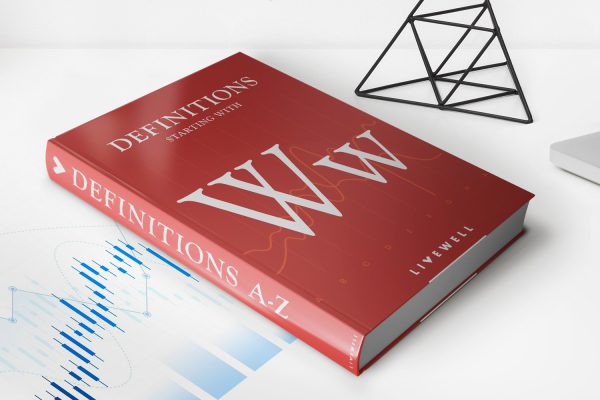

Finance
What Does Stacking Mean In Insurance
Modified: February 21, 2024
Learn what stacking means in insurance and how it can impact your finances. Understand the intricacies of this financial concept to make informed decisions.
(Many of the links in this article redirect to a specific reviewed product. Your purchase of these products through affiliate links helps to generate commission for LiveWell, at no extra cost. Learn more)
Table of Contents
Introduction
Welcome to the world of insurance, where terms like “stacking” can often leave policyholders scratching their heads. If you’ve come across this term and are wondering what it means, you’re in the right place. In this article, we will unravel the concept of stacking in insurance and explore its various implications.
Insurance policies are designed to provide financial protection in case of unforeseen events such as accidents, natural disasters, or medical emergencies. Stacking, in simple terms, refers to the practice of combining or “stacking” multiple insurance policies or coverages to increase the overall coverage limit or potential payout.
By stacking insurance policies, individuals can potentially maximize their compensation in the event of a covered loss. It is a technique employed by policyholders to tap into additional coverage sources beyond what a single policy would typically provide. However, it’s important to note that stacking is subject to the terms and conditions outlined in the insurance policies and the laws of the jurisdiction.
In the next sections, we will delve deeper into the definition of stacking, the different types of stacking, the benefits and limitations associated with it, and its implications across various types of insurance policies. Additionally, we’ll explore the legal considerations surrounding stacking and highlight the factors individuals should take into account before opting for this strategy.
So, whether you’re an insurance policyholder trying to understand your options or an individual looking to navigate the complex world of insurance, read on to gain a comprehensive understanding of what stacking means in the realm of insurance.
Definition of Stacking in Insurance
In the world of insurance, stacking refers to the practice of combining or aggregating multiple insurance policies or coverages to increase the overall coverage limit or potential payout in the event of a claim. It allows policyholders to tap into additional sources of coverage beyond what a single policy would typically provide. Stacking can involve stacking different types of coverage within the same policy or stacking coverage from multiple policies or insurers.
When it comes to stacking, there are two primary categories: vertical stacking and horizontal stacking.
Vertical Stacking
Vertical stacking occurs when an insured individual is covered under multiple policies, such as homeowners, auto, or personal liability insurance, and elects to combine or stack the coverage limits of each policy. This allows the policyholder to increase the amount of coverage available in the event of a covered loss.
For example, let’s say you have two auto insurance policies, each with a coverage limit of $50,000 for bodily injury. If you’re involved in a car accident and sustain injuries that require medical treatment costing $75,000, vertical stacking would allow you to potentially recover up to $100,000 ($50,000 from each policy) to cover your medical expenses.
Horizontal Stacking
Horizontal stacking, on the other hand, involves combining coverage from different sources within the same policy. This typically occurs when an insured individual is covered under multiple vehicles or properties under a single policy and chooses to stack the coverage limits of each insured item.
For instance, suppose you have three cars insured under the same auto insurance policy, and each car has a coverage limit of $50,000 for property damage. If all three cars are involved in a covered accident that results in $100,000 worth of property damage, horizontal stacking would enable you to potentially receive a payout of up to $150,000 ($50,000 per car) to cover the damages.
It’s important to note that the ability to stack coverage may vary depending on the insurance policies, the laws of the jurisdiction, and the specific circumstances of the claim. Additionally, stacking may not be available or allowed in certain states or for certain types of insurance policies, such as health or disability insurance.
Now that we’ve established the definition of stacking in insurance and its two primary categories, let’s explore the benefits and limitations associated with this practice in the next section.
Types of Stacking
When it comes to stacking in insurance, there are different types that policyholders should be aware of. The specific type of stacking that can be utilized may depend on the insurance policies, the laws of the jurisdiction, and the circumstances of the claim. Let’s explore some common types of stacking:
1. Policy Stacking:
This type of stacking involves combining multiple insurance policies to increase the overall coverage limit. Policy stacking can be implemented vertically or horizontally, as discussed in the previous section. By stacking policies, individuals can potentially access additional coverage from different policies to ensure they are adequately protected in the event of a claim.
2. Coverage Stacking:
Coverage stacking involves combining multiple coverage types within the same policy to enhance the overall coverage limit. For example, in auto insurance, coverage stacking can occur when an insured individual adds optional coverages such as uninsured/underinsured motorist coverage, medical payments coverage, or roadside assistance coverage to their policy, thereby increasing the available coverage in case of an accident.
3. Insured Item Stacking:
This form of stacking is applicable when an insured person has multiple items (such as vehicles or properties) covered under the same policy. Insured item stacking allows the policyholder to aggregate the coverage limits of each individual item, providing higher payout potential in the event of a covered loss. It is commonly seen in property insurance policies, where individuals may have multiple properties insured under a single policy.
4. Interpolicy Stacking:
Interpolicy stacking occurs when policyholders have multiple insurance policies with different insurers covering the same risk. This type of stacking may be applicable in situations where policyholders have primary and secondary insurance policies or when there is coordination of benefits between policies. Interpolicy stacking can help individuals leverage the coverage limits of multiple policies for a single claim.
It is crucial to review the terms and conditions of insurance policies and consult with insurance professionals or legal experts to understand the stacking options available and ensure compliance with the relevant laws and regulations. Additionally, stacking may not be available or allowed in certain states or for certain types of insurance, so it’s important to check the specific guidelines applicable to your insurance policies.
Now that you’re familiar with the different types of stacking, let’s move on to explore the benefits associated with this practice in the next section.
Benefits of Stacking
Stacking in insurance can offer several benefits to policyholders, providing them with increased coverage and potential financial protection in challenging situations. Here are some of the key benefits associated with stacking:
1. Enhanced Coverage Limits:
One of the primary advantages of stacking is the ability to increase the overall coverage limit. By combining multiple policies or coverage types, policyholders can access higher coverage limits, offering greater protection against potential losses. This can be particularly beneficial in situations where the standard coverage limit may not be sufficient to cover the full extent of the loss.
2. Increased Payout Potential:
Stacking allows individuals to tap into additional sources of coverage, resulting in a higher potential payout in the event of a claim. This can be especially valuable in cases of severe accidents or catastrophic events that may result in substantial financial losses. By maximizing the coverage available, policyholders can better protect themselves from the financial burden that may arise from an unexpected event.
3. Flexibility and Customization:
Stacking provides policyholders with flexibility and the ability to customize their insurance coverage according to their specific needs. It allows individuals to tailor their policies by combining different types of coverage or adding additional insured items to their policies. This flexibility enables policyholders to choose the level of protection that aligns with their unique circumstances and risk tolerance.
4. Maximization of Benefits:
Stacking can be particularly advantageous in situations where there are coordination of benefits or excess coverage available. By leveraging multiple policies, individuals can maximize the benefits they are entitled to under each policy. For example, if both primary and secondary insurance policies cover a particular loss, stacking allows policyholders to access the benefits of both policies, potentially resulting in a higher overall payout.
5. Peace of Mind:
Knowing that you have stacked insurance coverage can bring peace of mind. It provides a sense of security, knowing that you have taken the necessary steps to maximize your protection in the event of an unforeseen event. Stacking can help alleviate financial stress and provide individuals with a safety net to navigate challenging situations without significant financial hardship.
It’s important to note that the benefits of stacking may vary depending on the specific insurance policies, the laws of the jurisdiction, and the circumstances of the claim. Additionally, stacking may not always be available or permitted in certain states or for certain types of insurance policies. Therefore, it’s advisable to carefully review your policies, consult with insurance professionals or legal experts, and understand the specific stacking options available to you.
In the next section, we’ll explore some limitations and considerations associated with stacking in insurance.
Limitations of Stacking
While stacking can offer several benefits, it is important to be aware of its limitations and potential drawbacks. Understanding the limitations of stacking in insurance can help policyholders make informed decisions and manage their expectations. Here are some of the key limitations to consider:
1. Coverage Availability and Applicability:
Stacking may not be allowed or available for all types of insurance policies or in all states. Certain policies or jurisdictions may have specific regulations that restrict or limit the practice of stacking. It’s essential to review the terms and conditions of your insurance policies and consult with professionals to determine if stacking is an option for your specific coverage needs.
2. Complex Legal Considerations:
Stacking can involve complex legal considerations, especially when it comes to coordination of benefits between different policies or insurers. The legalities surrounding stacking are governed by state laws and insurance policy provisions. It’s crucial to consult with legal experts or insurance professionals who specialize in these matters to fully understand the legal implications and navigate any potential challenges.
3. Premium Costs:
Stacking multiple insurance policies or coverages to increase coverage limits may result in higher premium costs. The additional coverage provided by stacking may come at an increased cost compared to a single policy with lower limits. It’s important to weigh the benefits of the increased coverage against the potential impact on your insurance premiums and assess whether the financial trade-off is acceptable for your specific needs and budget.
4. Policy Exclusions and Limitations:
Stacking multiple policies does not guarantee automatic coverage for every type of claim or loss. Each insurance policy may have its own set of exclusions, limitations, and conditions. Policyholders must thoroughly review the terms and conditions of the policies involved in stacking to understand the specific coverage provided, as well as any exclusions or limitations that may apply. It’s crucial to be aware of these provisions to avoid any surprises when filing a claim.
5. Insurance Company Cooperation:
Stacking may depend on the willingness of insurance companies to cooperate and coordinate benefits. In situations where multiple insurers are involved, it’s essential to ensure that each insurer acknowledges and agrees to the stacking arrangement, as well as actively collaborates in the claims process. Lack of cooperation or disputes between insurers can potentially hinder the effective implementation of stacking and delay claim settlements.
It’s important to carefully weigh the limitations and considerations associated with stacking against your specific insurance needs and circumstances. While stacking can enhance coverage and provide additional protection, it may not always be the optimal choice for everyone. It’s advisable to consult with insurance professionals, legal experts, or insurance advisors who can assess your individual situation and guide you on the best approach to managing your insurance coverage.
In the next section, we’ll explore how stacking can be applied in different types of insurance policies.
Stacking in Different Types of Insurance Policies
The concept of stacking can be applied across various types of insurance policies, although the availability and applicability may vary depending on the specific policy and jurisdiction. Let’s explore how stacking can be relevant in different types of insurance policies:
1. Auto Insurance:
In auto insurance, stacking can be applicable when a policyholder has multiple vehicles insured under the same policy or when they are covered by multiple insurance policies. This allows the policyholder to combine the coverage limits of each insured vehicle to potentially increase the overall payout in the event of an accident or damage. Stacking can be particularly useful in cases involving uninsured/underinsured motorist coverage, where policyholders can stack coverage from multiple policies to protect themselves further in the event of an accident with an uninsured or underinsured driver.
2. Homeowners Insurance:
Homeowners insurance policies may offer stacking options, especially when multiple properties are insured under the same policy or when the policyholder has additional coverage endorsements. Policyholders can stack coverage limits for each insured property, providing increased protection against potential losses like fire, theft, or natural disasters. Stacking can allow homeowners to tap into multiple policy limits to cover the costs of repair or replacement, providing greater peace of mind and financial security.
3. Liability Insurance:
In liability insurance, stacking can come into play when a policyholder has liability coverage under multiple policies, such as personal liability insurance or umbrella insurance. Stacking allows individuals to maximize coverage limits and potential payouts in case they are held liable for damages or injuries caused to others. It can be particularly valuable in situations where the liability exceeds the coverage limits of a single policy.
4. Commercial Insurance:
In commercial insurance, stacking can be applicable in scenarios where a business has multiple policies or coverages addressing different aspects of its operations. For example, a business may have general liability insurance, commercial property insurance, and commercial auto insurance. By leveraging stacking, a business can combine the coverage limits of each policy to ensure comprehensive protection across various risks and potential claims.
5. Umbrella Insurance:
Umbrella insurance is designed to provide additional liability coverage beyond the limits of underlying insurance policies. Stacking can be relevant in umbrella insurance when there are multiple underlying policies with different coverage limits. Policyholders can stack the coverage limits of each underlying policy with the umbrella policy, resulting in a higher overall coverage limit and increased protection against significant liability claims.
It’s important to review the terms and conditions of your specific insurance policies, as well as consult with insurance professionals or legal experts, to determine the stacking options available and the extent to which they apply in your insurance policies and jurisdiction.
In the next section, we’ll explore the difference between stacking and non-stacking insurance policies.
Stacking vs Non-Stacking
When it comes to insurance policies, there are generally two approaches: stacking and non-stacking. Understanding the difference between these two approaches is crucial for policyholders in order to make informed decisions about their insurance coverage. Let’s explore the key distinctions between stacking and non-stacking insurance policies:
1. Stacking Policies:
Stacking policies allow policyholders to combine or “stack” multiple policies or coverages to increase the overall coverage limits or potential payouts. As discussed earlier, stacking can involve vertical stacking (combining policies from multiple insurers) or horizontal stacking (combining coverages within the same policy). Stacking policies provide flexibility and the opportunity to maximize coverage by tapping into multiple sources of protection. However, the ability to stack policies may be subject to specific laws, regulations, and policy provisions in each jurisdiction.
2. Non-Stacking Policies:
Non-stacking policies, on the other hand, do not allow the combining or aggregation of coverage limits from multiple policies. Each policy within a non-stacking approach functions independently, meaning the coverage limits of each policy cannot be added together. In the event of a claim, the policyholder can only recover up to the coverage limit specified in the individual policy. Non-stacking policies are more common in jurisdictions where stacking is prohibited or not allowed by default.
The choice between stacking and non-stacking policies may depend on various factors, including the specific insurance needs, coverage limits required, and the laws or regulations applicable in the jurisdiction where the policy is issued. It’s crucial for policyholders to carefully review their policy terms and conditions to understand whether stacking is available as an option and to consider the potential benefits and limitations associated with each approach.
It’s important to note that insurance policy language and regulations can differ across jurisdictions, meaning that the availability of stacking and non-stacking policies may vary. Some states may require insurers to offer stacking by default, while others may prohibit or limit the practice. Further, stacking may be subject to specific requirements, such as proving damages or exhausting the limits of certain policies before accessing additional coverage.
Policyholders should consult with insurance professionals or legal experts who can provide guidance on the stacking options available in their specific jurisdiction and ensure compliance with applicable laws and regulations.
In the next section, we’ll explore some of the legal considerations that surround stacking in insurance.
Legal Considerations of Stacking
When it comes to stacking in insurance, there are several legal considerations that policyholders should keep in mind. These legal considerations can vary depending on the jurisdiction and the specific insurance policies involved. Understanding the legal aspects of stacking is crucial to ensure compliance with the applicable laws and regulations. Here are some key legal considerations related to stacking:
1. State Laws and Regulations:
Each state has its own laws and regulations regarding stacking in insurance. Some states may have specific statutes that govern how stacking can be applied, while others may prohibit or limit the practice. It’s important to understand and comply with the laws of the jurisdiction in which the insurance policy is issued and any requirements related to stacking.
2. Policy Provisions:
The terms and conditions of insurance policies play a significant role in determining the availability and extent of stacking. Policyholders should carefully review their insurance policies to understand any provisions that pertain to stacking, including any exclusions, limitations, or requirements that may be specified within the policy language.
3. Coordination of Benefits:
When stacking multiple insurance policies, coordination of benefits is a crucial consideration. Coordination of benefits ensures that policyholders do not receive duplicate or excessive payments for the same loss. It may involve determining the primary and secondary insurance policies, establishing the order in which policies will respond to a claim, and coordinating the payout amounts. Understanding the coordination of benefits provisions is essential to ensure fair and proper application of stacking in insurance claims.
4. Proof of Loss and Damages:
Policyholders may be required to provide proof of loss and damages when seeking coverage under stacked insurance policies. This may involve providing documentation, such as medical bills, repair estimates, or receipts, to substantiate the extent of the loss or damages incurred. Understanding the specific requirements for proving loss and damages is crucial for policyholders to ensure a smooth claims process and to avoid any potential disputes with the insurance company.
5. Legal Interpretation and Precedence:
Stacking can involve complex legal interpretations and precedence. Court decisions and legal precedents may influence the application and enforceability of stacking in certain jurisdictions. Understanding how stacking has been interpreted by courts can provide valuable insights into the potential outcomes of insurance claims and legal disputes related to stacking.
Given the complexities involved in the legal aspects of stacking, it’s advisable to consult with legal experts or insurance professionals who are familiar with the laws and regulations governing insurance in your jurisdiction. They can provide guidance and ensure that you are properly informed about the legal considerations associated with stacking in your specific insurance policies.
In the next section, we’ll discuss some factors that individuals should consider before opting for stacking in their insurance coverage.
Factors to Consider Before Opting for Stacking
Before deciding to opt for stacking in your insurance coverage, there are several important factors that need to be considered. These factors can significantly impact the effectiveness and suitability of stacking for your specific insurance needs. Here are some key factors to consider:
1. Coverage Needs:
Assess your coverage needs and evaluate whether the standard coverage limits provided by a single policy are sufficient to protect you in the event of a loss. If you have significant assets or potential liabilities, stacking may be worth considering to increase your coverage limits and ensure adequate financial protection.
2. Applicable Laws and Regulations:
Research and understand the laws and regulations pertaining to stacking in your jurisdiction. Laws can vary from state to state or country to country, and they may impose restrictions or requirements that affect stacking. Familiarize yourself with the legal framework in your area to determine if stacking is allowed, the limitations involved, and any legal obligations you must fulfill.
3. Policy Options and Provisions:
Review the terms and conditions of your insurance policies to understand the stacking options available to you. Some policies may have built-in provisions that allow stacking, while others may expressly prohibit it. Additionally, pay attention to any limitations, exclusions, or specific requirements related to stacking within the policy language.
4. Premium Costs:
Consider the potential impact on your insurance premiums before opting for stacking. Stacking may result in higher premium costs, as it involves combining multiple coverage sources. Evaluate whether the benefits of increased coverage outweigh the potential increase in premium expenses and ensure that stacking aligns with your budgetary considerations.
5. Coordination of Benefits:
Understand the coordination of benefits process if you have multiple insurance policies. Determine how the policies’ coverages interact and if stacking is possible or beneficial in your situation. Be aware of any requirements for exhausting the primary policy limits before accessing additional coverage to avoid potential complications or disputes during the claims process.
6. Claims Process:
Consider the potential impact on the claims process. Stacking multiple policies may introduce complexity, requiring coordination between insurance companies and potentially longer processing times. Ensure that you understand the procedures and potential challenges involved in filing stacked claims, as well as the time frames within which claims must be submitted after an incident.
7. Professional Guidance:
Seek advice from insurance professionals, brokers, or legal experts familiar with stacking and the specific laws in your jurisdiction. These professionals can provide valuable insights and guidance tailored to your unique circumstances, helping you navigate the complexities and make informed decisions about your insurance coverage.
By carefully considering these factors, you can determine whether stacking is a viable and beneficial option for your insurance needs. It’s crucial to conduct thorough research, review your policies, and seek expert advice to ensure that stacking aligns with your goals, complies with applicable laws, and provides the desired level of protection.
In the final section, we’ll summarize the key points covered in this article on stacking in insurance.
Conclusion
Stacking in insurance is a practice that allows policyholders to combine multiple policies or coverage types to increase coverage limits and potential payouts. It can provide enhanced protection and financial security in the event of unexpected losses or liabilities. However, before opting for stacking, it is crucial to consider various factors such as coverage needs, applicable laws and regulations, policy provisions, premium costs, coordination of benefits, claims process, and seek professional guidance when necessary.
Understanding the different types of stacking, including vertical stacking and horizontal stacking, helps policyholders determine the most suitable approach for their specific insurance needs. Additionally, being aware of the benefits and limitations of stacking allows individuals to make informed decisions about their insurance coverage.
Legal considerations play a significant role in stacking, as state laws and policy provisions can impact the availability and applicability of stacking. Policyholders should understand the legal requirements and ensure compliance to avoid any potential issues or disputes with their insurance companies.
Lastly, evaluating the factors discussed in this article ensures that policyholders make well-informed choices about stacking in their insurance coverage. By considering their coverage needs, applicable laws, policy options, premium costs, coordination of benefits, and seeking professional guidance, individuals can make decisions that maximize their coverage and provide them with the desired level of protection.
Remember, insurance policies and their terms can vary, so it’s important to review your specific policies, consult with insurance professionals, and stay up-to-date with laws and regulations in your jurisdiction to make informed decisions about stacking.
Stacking can be a valuable strategy for policyholders seeking to enhance their insurance coverage. However, it is essential to carefully assess the options, understand the implications, and ensure that stacking aligns with your overall insurance goals and financial circumstances.
By taking the time to evaluate stacking and its implications, policyholders can navigate the complex world of insurance and make decisions that provide them with the necessary protection and peace of mind.














